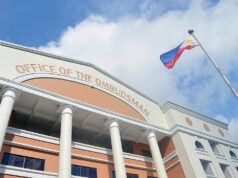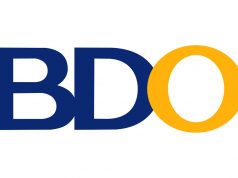Slow infrastructure rollout worries WB
By Elijah Joseph C. Tubayan
Reporter
THE PHILIPPINES can still be expected to lead large Southeast Asian states in economic growth, the World Bank said in its latest regional assessment, even as it slashed its projection for the country in the face of “slower-than-expected implementation of public investment projects.”
In the October 2017 East Asia and Pacific Economic Update that it released yesterday, the multilateral lender slashed its 2017 Philippine gross domestic product (GDP) growth outlook for the second time this year to 6.6%, from the 6.9% and 6.8% pencilled in its January and July reports, respectively.
It also lowered its 2018 and 2019 forecasts to 6.7% from 6.9% previously.
Those projections compare to 2016’s actual 6.9% — against the government’s 6-7% target for that year — and official goals of 6.5-7.5% for 2017 (actual first-semester average clocked 6.45%) and 7-8% annually from next year to 2022.
“Growth in the Philippines is likely to expand at a slightly slower pace in 2017 — 18, due in part to slower-than-expected implementation of public investment projects,” the World Bank said in its latest report.
“The delay in the planned government infrastructure program has contributed to slower growth in investment spending, thus softening the growth prospect for the year,” it explained.
“Nevertheless, it is expected to continue to be the fastest growing of the large ASEAN economies,” the multilateral lender added of the Philippines’ comparison with peers in the Association of Southeast Asian Nations (ASEAN).
The seven months to July saw public infrastructure spending and other capital outlays grow 11.1% to P297.5 billion from the P267.7 billion recorded in 2016’s comparable period, according to latest Budget department data.
That compares to an P847.22-billion program for 2017 infrastructure spending alone, equivalent to 5.32% of GDP. The current administration’s P8.44-trillion “Build, Build, Build” infrastructure development program will see that spending rise to P1.899 trillion in 2022, when President Rodrigo R. Duterte ends his six-year term, equivalent to 7.45% of GDP.
The World Bank yesterday flagged that “the pace of economic growth could be slower if the government is unable to timely deliver on its planned infrastructure program.”
Sought for comment, Socioeconomic Planning Secretary Ernesto M. Pernia said in a mobile phone message: “We’ll try to disprove them.”
“Complementary reforms to address budget execution and implementation bottlenecks and to ensure high quality of spending are needed,” the report read further.
State economic managers have said they will bank on the proposed budget reform bill that will shorten the validity period of appropriations to one year from two years currently, as well as proposed amendments to Republic Act No. 9184, or the Government Procurement Reform Act, to quicken procurement.
The World Bank added that “[m]aintaining fiscal stability over the medium term will also depend on the success of priority tax reforms.”
The first of up to five tax reform packages has encountered rough sailing in both the House of Representatives, which approved the bill at the end of May, and in the Senate where it is undergoing plenary debates and where it has seen further dilution of projected revenues from the House version.
That tax reform package cuts personal income tax rates and offsets foregone revenues from this move with higher excise tax rates on automobiles and fuel, an excise tax on sugar-sweetened drinks, simplification of estate and donor’s tax systems, and fewer value added tax exemptions.
The second package, slated to be submitted to both chambers of Congress in January, will gradually cut the corporate income tax rate to as low as 25% by 2021 from 30% currently in order to align the system with those of many of the Philippines’ competitors in the region, as well as streamline fiscal incentives in order to reduce foregone revenues by ensuring these perks go to only investors who need them.
The World Bank said in its report that “the medium-term growth outlook remains positive and is expected to be anchored in growth in the Philippines’ main trading partners which would lead to higher external demand, while imports would remain elevated due to necessary imports of intermediate and capital goods, including for the infrastructure program.”
“As the public infrastructure program gains traction, capital outlays and construction activities are expected to rise,” it said, adding that “[l]ocal elections in 2019 will likely boost domestic activities as early as the latter half of 2018.”
Big economies’ interest rate tightening could cause capital outflows and foreign exchange volatility. The Philippines, Indonesia, Malaysia and Thailand will “remain relatively more exposed to exchange rate risk with sizable external debt” of companies, “although foreign exchange reserves currently appear adequate.”




